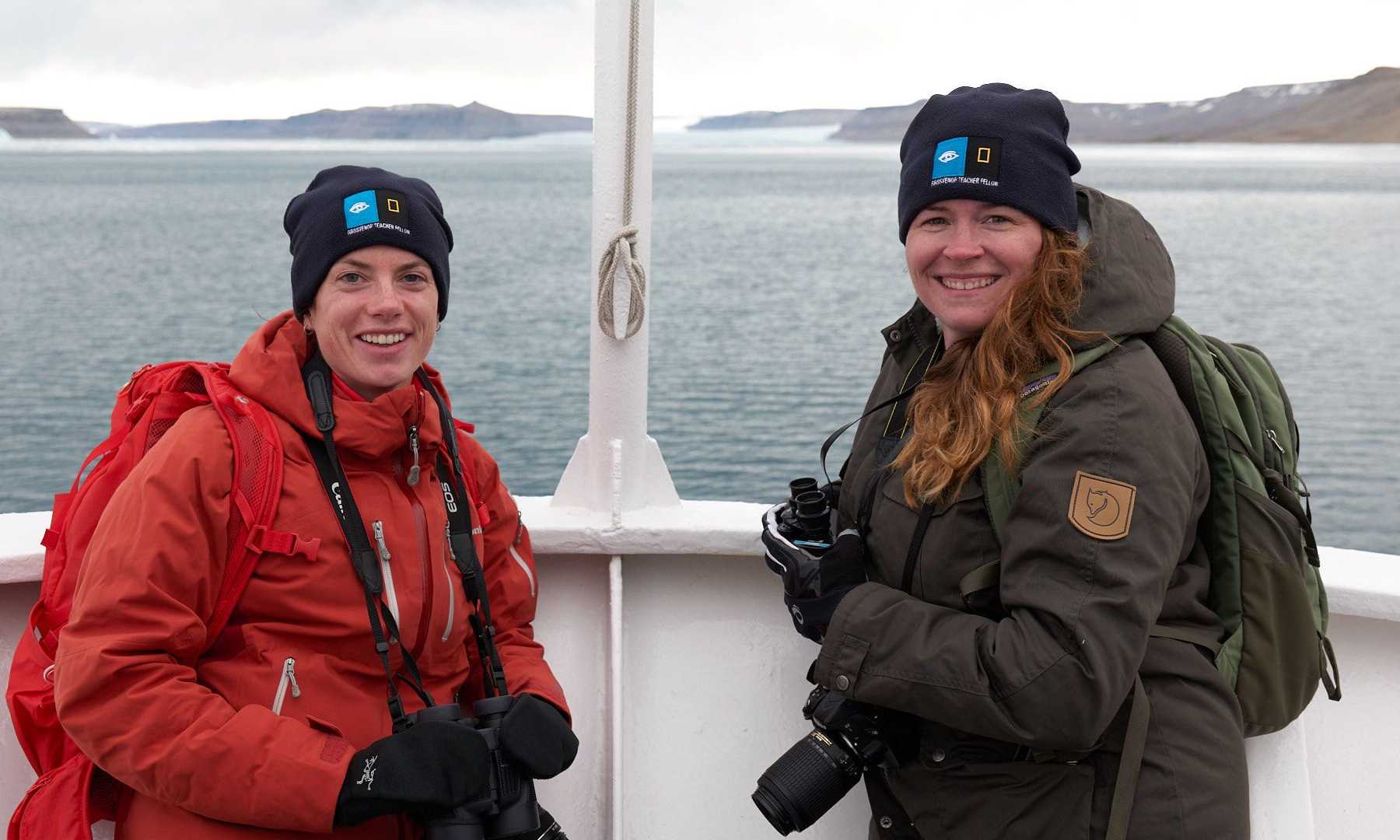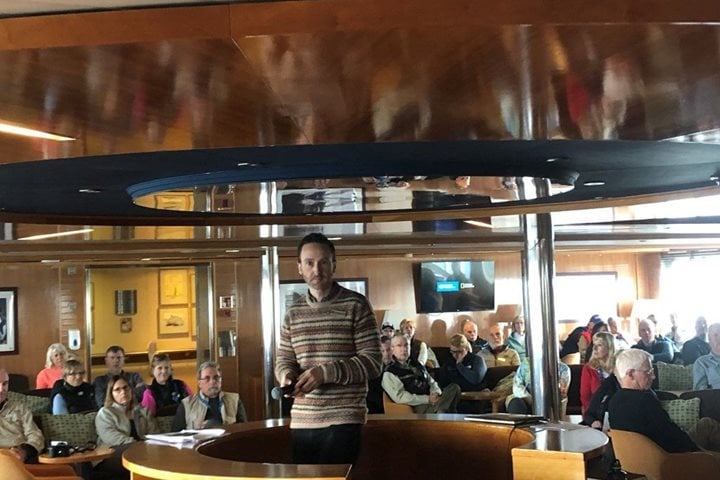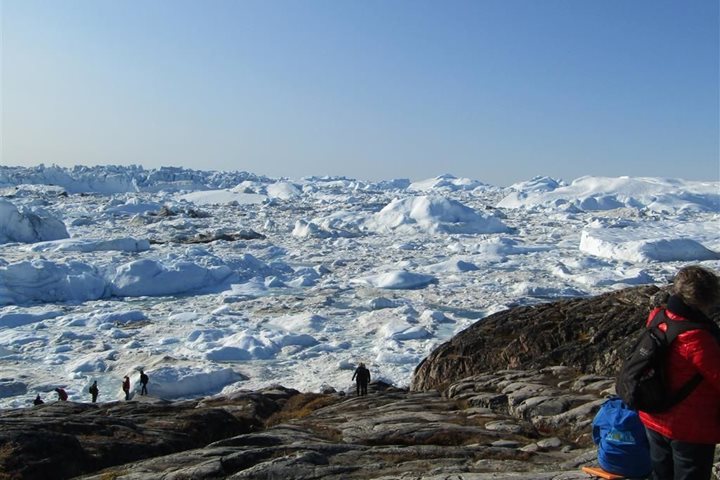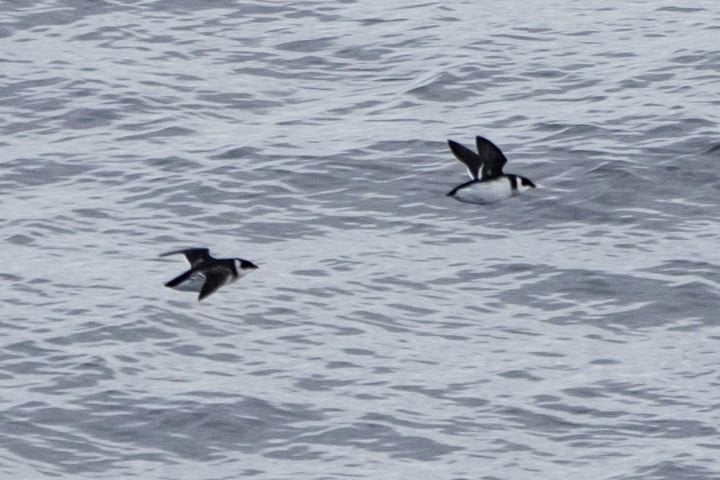It has been an honor to join Lindblad Expeditions-National Geographic on a voyage to Greenland and the Canadian High Arctic. Our objective for this experience was to enhance our geographic knowledge and global awareness so that we can develop lessons and activities to bring back to our classrooms and communities.
A reflection from Ali Farlow-Troy
When I thought about the Arctic pre-expedition, images of polar bears and snow geese populating an icy landscape came to mind. I visualized the glaciers and blue waters of a place that, to me, defined wilderness. Reflecting on my expedition I have come to realize that the Arctic is all of these things and so much more.
It was a privilege to observe this wildlife in its natural habitat. Hanging off the bow to watch a mother polar bear guide her cubs across the sea ice or witnessing a walrus nurse her calf are moments on the expedition that I won’t forget. And, it’s the learning that has accompanied these moments that have brought so much meaning to the experience. The naturalist and global perspective guest speakers have stretched my thinking and left me feeling empowered to make decisions even in the face of uncertainty.
One of the things that intrigues us about science and exploration is the element of mystery that surrounds it. We act as detectives to derive meaning from what we see, hear, and read. I’m excited to go back to my classroom to push my students to find answers to questions like: Why is polar life so adaptable? How do mountains affect humanity? Is the decline of sea ice really a big deal?
I now see the Arctic as a colorful place where culture meets wilderness. I hope to inspire my students to be responsible, curious learners and am looking forward to sharing my journey with them.
A reflection from Claire Trainer
The Arctic environment is full of strikingly beautiful landscapes and wildlife, which has surpassed any expectation that I had coming into this expedition. Even more so, I have been surprisingly struck by the human story being told through clues of the environment. At a few locations, we were introduced to Thule ruins, specifically the Thule winter house ruins. Laying in and around the ruins were a variety of bowhead whale bones that were used as structural support. While the Thule people have abandoned these winter houses, the bones are still preserved and help to tell the story of their lives. The location of these winter houses also tells of past sea levels and water recessions that are supported by evidence of rock deposits. Science helps to explain the Thule way of life, while past evidence of their lives help to support scientific ideas.
I love that students can make sense of their world through science, but I am reminded by this expedition that science is very much a human endeavor and there is a need for students to be able to relate our learnings to their lives to build a stronger foundational connection and appreciation that will stay with them throughout their lives.
We would like to express our gratitude to National Geographic and Lindblad Expeditions for providing us with this opportunity.
The Grosvenor Teacher Fellow (GTF) program is a professional development opportunity made possible by a partnership between Lindblad Expeditions and National Geographic Education. The program is named in honor of Gilbert M. Grosvenor, Chairman Emeritus National Geographic Society and Education Foundation Board. It gives current K–12 classroom teachers and informal educators from the 50 U.S. states, Canada, the District of Columbia, and Puerto Rico the opportunity to extend Grosvenor’s legacy of excellence in geographic education.
Fellows are an integral part of the National Geographic community, working to further students’ understanding of the planet and empower them to generate solutions for a healthier and more sustainable future. While aboard, Fellows will share the importance of geographic literacy with fellow travelers, develop activities to bring back to their classrooms, and have an adventure of a lifetime.






